#Legendary Stacker Burger
Explore tagged Tumblr posts
Text





















National Onion Ring Day
Crisp, fried, a bit sweet—onion rings are the fancy cousin of the French fry. Have a taste-test with various dipping sauces, or get samples from different places.
They’re rich and crisp and delicious, surprisingly sweet for a flavor so often related to being spicy and the source of tears. But something about the process of breading them in a flavorful coating and deep-frying them in a vat of oil brings out the delicious flavors hidden inside. They come in towers and flowers, giant-sized and tiny, and they’re a favorite at burger joints all over the world. That’s right, we’re talking about the onion rings, and National Onion Ring Day celebrates this delicious treat and its long history.
History of National Onion Ring Day
The origin of the onion rings is actually somewhat mysterious, but we do know that in 1802 a recipe was published in ”The Art of Cookery Made Easy and Refined.” This recipe describes a process of dipping ½” onion rings dipped into a rather flavorful mixture of flour with creams and cheeses and then boiling them in a vat of lard. Following on the heels of this was a suggestion to serve it with a sauce made of a mixture of mustard and butter.
Since then, there have been many refinements of the onion rings recipe, with a great debate existing on the proper method and what brings out the best flavor. There are hundreds of recipes involving different mixtures of batter to coat them in, different sauces to dip them in, and even the type of onions you use to prepare them.
As if that wasn’t complicated enough, there’s even a variety of onion rings that are made from an onion paste formed into a circle instead of an actual slice of onion. If you’ve ever enjoyed these delicious treats, then National Onion Ring Day provides you with an excuse to go to your favorite source and consume onion rings until you burst.
Onion rings aren’t just an invention of the western world. There’s also evidence that people experimented with the idea of covering strips of onion with batter and deep-frying them in developing countries too. In India, for instance, merchants would often sell fried, battered onion strips as street food – a quick snack that people could munch on the go.
As we discussed, historians have found examples of onion ring-like recipes that date back as far as 1802. With that said, there are restaurants in operation today that claim to be the originators of the idea.
Kirby’s Pig Stand – the famous historical restaurant chain – claims to have battered and served up the first official onion rings as far back as the 1920s. The restaurant’s location in Dallas, TX, was the first in the world to offer a drive-in service where people could collect food from the convenience of their vehicles.
In many ways, the outlet was the progenitor to the modern fast-food restaurant. The roof was red-tiled and pagoda-like in appearance, and the outer walls made heavy use of stucco to brighten the exterior. Over the years, the company built many more outlets, but eventually, chains like McDonald’s and Taco Bell bought them up. In 2006, the company went bankrupt, and the last restaurant closed.
How to celebrate National Onion Ring Day
National Onion Ring Day is your opportunity to get out there and enjoy your favorite deep-fried savory treat. They’re simple to make at home, and while a deep fryer is great, it isn’t essential in their preparation. There are even baked Onion Rings if you decide to go that way, but nothing beats the original. Just heat up a pan of oil until a small drop of batter starts to sizzle when dropped in, and then carefully submerge your coated Onion Rings one by one and cook until a golden brown. There are dozens of recipes online that you can try, and even more recipes for sauces to serve them with.
If making onion rings isn’t your idea of fun, but you like eating them, then you can head out to any one of the dozens of restaurant chains that serves them as part of their daily menu. While many fast-food chains offer onion rings, the best examples come from independent restaurants with proprietary recipes. It’s highly likely that you have at least one of these in your area, serving up rings in the traditional style. Look for local diners with a long history and experienced management. Family businesses tend to be the best.
Some people really don’t like onions. Many won’t go near them, even if they’re covered in batter and deep-fried, but that’s okay. You don’t have to eat onion rings, though, to celebrate National Onion Ring Day – you can branch out. Remember, onion rings were the inspiration for many of the fried snacks and sides that we enjoy today. French fries, deep-fried brie, and fried chicken are all delicious alternatives that you can try if you fancy something different.
There are so many reasons to celebrate National Onion Ring Day. Onion rings are one of the most popular snacks and have become a staple in many parts of the world. They’re a bit like French fries, but taste even more special and delicious in some cases. You can dip them, dunk them, and eat them alongside all your favorite sandwiches and hamburgers. You can even lay them out at a buffet at parties. They’re so flexible!
Onion rings are also instructive for people looking for culinary inspiration. John Mollard – the man behind the 1802 recipe – was a genius. It took the world more than a hundred years to catch up to his vision of the perfect snack. Could you come up with a new recipe that is way ahead of its time?
Happy National Onion Ring Day!
Source
#Legendary Stacker Burger#Cowboy Burger#BBQ Bacon Cheeseburger#fries#food#restaurant#travel#Firejumper Burger#SMOKEHOUSE Burger#Waterworks Bourbon Burger#Bacon Wrapped Onion Rings#Whitefield Square Burger#Bronx Burger#Elk Black Jeck Burger#National Onion Ring Day#NationalOnionRingDay#22 June#USA#Canada#original photography#vacation#Wayne Burger#Colossal Supreme Burger#Brooklyn Burger
3 notes
·
View notes
Text
ballpark foods
Kevin Snyder MKT111 http://kevin17blog.tumblr.com/
Ballpark Bites: Top Food Finds at 16 Baseball Stadiums
Play Ball There’s nothing wrong with peanuts and Cracker Jack, but ballparks around the country are stepping up their concession game, serving local favorites and creative spins on classics. We’ve gone coast to coast, rounding up great choices you could eat alongside new favorites you definitely should eat at the stadiums. Play ball — and eat well.
Angel Stadium (Los Angeles Angels) You could eat: The stadium serves LA-approved healthy acai bowls, as well as the cleverly named Buffalo-style Angel Wings. You should eat: A ballpark outpost of local taqueria Chronic Tacos pays tribute to Southern California’s Mexican food scene. Though the line can get long, the reward is two corn tortillas with your choice of filling (choose the marinated, grilled carne asada), topped with cheese, onions, cilantro, lime, crema and salsa. There's also a choose-your-own tostada bowl.
Citi Field (New York Mets) You could eat: There’s an outpost of Shake Shack, with predictably great burgers, but the lengthy lines mean missing at least an inning. You should eat: “Magician of Meat” Pat LaFrieda is making magic here, with a one-dish kiosk selling filet mignon sandwiches. Order one and you’ll get chopped, fresh-off-the-griddle Black Angus beef with Monterey Jack cheese and sauteed Vidalia onions, served au jus on a toasted local baguette.
Citizens Bank Park (Philadelphia Phillies) You could eat: There are plenty of odes to the cheesesteak at the Phillies' park, including sandwiches at Campo's and Tony Luke's, and a cheesesteak-nacho hybrid. The Schmitter, a trademarked grilled steak-salami-onion sandwich from McNally’s Tavern in Chestnut Hill, has its own dedicated stand, too (section 141). You should eat: Nab a taste of one of the city’s best sandwiches with the Federal Fried Chicken Sandwich, made by Federal Donuts (section 140). The boneless breast is tangy from buttermilk ranch seasoning, and is topped with American cheese, a pickle and Sriracha, all on a potato roll.
Coors Field (Colorado Rockies) You could eat: Rocky mountain oysters. The deep-fried bull jewels are a rite of passage, and a big draw at the stadium. You should eat: Wazee Market sandwiches. Named for a bygone Denver market, the Italian-style sandwich shop makes pizzas, gelato and panini, as well as hearty sandwiches like the Rockies Corned Beef Sandwich, topped with onion rings, slaw and a blanked of melted Swiss cheese, making it the perfect pairing for some local craft beer.
Dodger Stadium (Los Angeles Dodgers) You could eat: Baseball means hot dogs, and no hot dog is quite as legendary as a Dodger Dog, preferably grilled and topped with diced onions. You should eat: It’s hard to justify vegetables at a ballpark, but elote — Mexican-style grilled corn — is perfect on a hot summer day. Slicked with mayonnaise, dusted with Mexican cheese and spiced with chile powder, the corn (available at Think Blue BBQ) is perfect for gnawing beside a backdrop of palm trees. Pair it with the epic Langer’s-inspired pastrami burger (a quarter-pound patty topped with hot pastrami and mustard on a potato bun) for the full L.A. experience.
Fenway Park (Boston Red Sox) You could eat: The park’s namesake Fenway Franks sizzle on Yawkey Way. You should eat: Those with access to the EMC level should partake in the EMC Club, whose nightly changing menu uses ingredients grown in the rooftop garden. Beyond the standard Fenway Franks and burgers, New England classics are served throughout the stadium. Legendary Boston Globe columnist Dan Shaughnessy weighed in: “I’m partial to the lobster roll,” he said, also citing sliders and a wedge salad. The mayo-slicked rolls are available on the Concourse Level at Home
Kauffman Stadium (Royals) You could eat: There’s a healthy helping of barbecue inside Kansas City’s ballpark, including various takes on pulled pork, but the burnt end cheesesteak is the winner. The sauce-slathered combo, available at Farmland Grill (section 239), is smoky, meaty and a great local take on a game-day sandwich. You should eat: Is it a corn dog? A deep-fried German sausage? Boulevard Grill’s bacon-wrapped, tempura-battered footlong dog (section 206) defies all categorization. It’s sweet and spicy, thanks to its chipotle ketchup and slightly sweet cabbage slaw, and packed into a soft pretzel bun that can barely contain the big-league flavor.
Marlins Park (Florida Marlins) You could eat: When in Miami, tuck into a Cubano. The Marlins’ version doesn't skimp; this griddled rendition is packed with thin-sliced ham, cheese and pickles. You should eat: Get a little salsa flavor into your baseball concessions with the Miami Mex Taco Dog. The spicy love child of a taco and hot dog, this footlong frank packs in flavor, with braised chili con carne, cheese, slaw, charred-jalapeno-lime aioli and fresh salsa, all wrapped in a flour tortilla.
Miller Park (Milwaukee Brewers) You could eat: When in the cheese capital of the country, go for fried cheese curds (at Hot Cheese). They’re a very addictive alternative to peanuts, and good to snack on after a grill-out at the park’s epic tailgates. Throughout the park, concessions can read like a state fair showcase, with options like the Ham-Stuffed-Into-A-Doughnut Sandwich (at Smoke Shack) or Bacon on a Stick (at Specialty Sausages). You should eat: Anyone not hungry by the seventh-inning stretch will be swayed by the Klement’s Sausage Race. Make a dash from there to the brand’s grill stand for the hefty Wisconsin Beer Brat, a step up from a standard hot dog and the perfect pairing for brews from the entire Miller portfolio.
Minute Maid Park (Houston Astros) You could eat: Texas barbecue abounds at the Astros’ home stadium. Grab a brisket-loaded baked potato from Texas Smoke or pulled-pork sliders from Little Bigs. On the Club Level, The Butcher serves racks of barbecued ribs. You should eat: Tex-Mex makes a mighty alternative to standard burgers and dogs. The Chipotle Pescado, available from Street Eats (sections 126 and 409), has coffee-rubbed salmon wrapped in two layers of corn tortillas, all topped with mango-jalapeno ranch dressing and squiggles of spicy aioli.
Nationals Park (Washington Nationals) You could eat: Washington’s iconic Ben’s Chili Bowl has a ballpark outpost, so if it’s a classic D.C. half-smoke you’re after, this is the spot. You should eat: Any of the sandwich offerings at G by Mike Isabella, a stadium offshoot of the Top Chef alum’s popular 14th Street shop. Isabella’s subs are inventive but not too chef-y to inhale from your seat in the stands. The juicy chicken Parm does red sauce proud, the Italian is loaded with spicy cold cuts and the roasted cauliflower with romesco is a winning vegetarian option that will satisfy any hungry baseball fan. Isabella is also behind two more Nats Park eateries: A spinoff of his Greek-influenced Kapnos restaurants serves several kinds of gyros, and at the Southern-themed Catchfly, you can get a hot-chicken fix.
Petco Park (San Diego Padres) You could eat: Sure, there are solid, well-battered fish tacos at this Downtown San Diego stadium – and they’re great. You should eat: The best food for a summer evening at the park is a perfectly greasy California-style burger. Hodad’s, a favorite of Guy Fieri, has an outpost here in a converted trailer by the outfield. A cheeseburger will get you a puffy sesame-seed-topped bun with a well-griddled patty, a slick of cheddar, shredded iceberg, dill pickles and onion. It’s perfect to pair with the park's unrivaled list of microbrews from Stone, Ballast Point, Mission and beyond.
PNC Park (Pittsburgh Pirates) You could eat: PNC Park has an outpost of superstar sandwich shop Primanti Bros., with a scaled-back version of the full menu, including cheese fries and capicola with cheese. You should eat: Wings, and lots of them. The Pirates borrow a page from the tailgating playbook with an outpost of Quaker Steak & Lube, home to the city’s best wings, with more than two dozen sauces.
U.S. Cellular Field (Chicago White Sox) You could eat: The Irish Nacho Helmet piles fries into a little green souvenir vessel with cheese, bacon and sour cream, a nod to Chicago’s Irish heritage. You should eat: The Bases Loaded Baked Potato, an even better variation on the theme, has become a fan favorite, packed with beef barbacoa, cheddar, broccoli and chives. Anyone lucky enough to land box seats should follow up with something from the legendary dessert cart.
Wrigley Field (Chicago Cubs) You could eat: Giordano’s is the official pizza slinger at Chicago’s legendary park, serving 6-inch personal deep-dish pies that are an excellent — if messy — taste of the city. You should eat: Wrigley has excellent hot dogs, including Chicago-style dogs and fan favorite Vienna Smokies, but the stadium's biggest draw may be the Hot Doug’s options, available in the bleachers. Go for the Barry Foote, a corned-beef sausage with Swiss cheese, Louie dressing and sauerkraut, ideally paired with Wrigley’s beloved Old Style beer. Yankee Stadium (New York Yankees) You could eat: Nolita favorite Parm operates a stadium outpost serving its namesake sandwiches, like the chicken and meatball Parms. They’re gooey, tangy and everything a hero should be. You should eat: New York butcher Lobel's operates two carving stations, serving sliced-to-order steak sandwiches packed with medium-rare beef rich with its own juices on a fluffy bun. They’re on the extravagant side at $15, but they’re impossibly tender, well-seasoned and so much better than the usual ballpark burgers. The Best New Baseball Park Foods
Pulled Pork Pierogi Stacker at PNC Park (Pittsburgh Pirates) PNC Park ran a contest in 2011 asking fans to designate a signature sandwich, and the Pulled Pork Pierogi Stacker won top honors. It's smoked pulled pork, onion jam and two boiled pierogi on a pretzel bun — all meant to honor the city's Polish and Eastern European residents. Sweet Spot Cotton Candy Dog at Globe Life Park (Texas Rangers) Globe Life Park is famous for its over-the-top franks — the stadium sells 16 options in all. Inspiration for this cotton candy–topped dog came from a player: A concessions manager was brainstorming toppings when he spotted Rangers first-baseman Prince Fielder snacking on cotton candy. The sauce on top is blue cotton candy mixed with yellow mustard (hence the green color).
S'mores Bacon on a Stick at Citi Field (New York Mets) The Pig Guy stand at Citi Field sells three kinds of bacon on a stick, but the fan favorite is the one that's dunked in chocolate and rolled in a crushed graham cracker and marshmallow mixture. Yes, s'mores-flavored smoked pork belly sounds like a bad idea, but most people go from "That's gross" to "This is amazing" in less than a bite.
Cleveland Caramel Fries at Progressive Field (Cleveland Indians) This dish started with a Chopped-style challenge: The park's concessions manager asked his team to create a new menu item based on fresh-cut fries — and whatever else was in the kitchen. The result was deep-fried spuds drenched in caramel and chocolate sauce, with a heaping side of whipped cream. Word has it the staffers will sneak you a sample if you're skeptical.
Crab Waffle Fries at Oriole Park at Camden Yards (Baltimore Orioles) What nacho cheese is to most ballparks, crab dip is to Oriole Park: You can order it over chips, pretzels and sausages, but the perennial crowd-pleaser is the crab dip french fry. The chefs tested a bunch of different fries before settling on the waffle cut — its nooks and crannies can hold the most dip.
Tater Tot Chop at Turner Field (Atlanta Braves) It's a rookie mistake to think this sandwich is made with regular waffles — these are Tater Tots pressed in a waffle iron and stuffed with bacon, cheese and jalapenos. The ketchup is infused with Coca-Cola, another Atlanta home team. Chicken and Waffle Cone at Minute Maid Park (Houston Astros) Forks and knives don't really have a place in the stands, so in Houston, two Southern favorites — popcorn chicken and mashed potatoes — are served in a waffle cone. This year, the chefs are rolling out a toppings bar, including jalapenos, roasted peppers, barbecue sauce, honey mustard and country gravy.
Bigger Better Burger Bloody Mary at Target Field (Minnesota Twins) Like most Bloody Marys, this one comes with a celery stalk. It also comes with a beef stick, a pickle, cheese cubes, pepperoncini and an olive. Oh, and a bacon cheeseburger slider. It took chefs a while to figure out how to serve the drink while the slider was still warm, but their effort was for naught: Many customers spend a few minutes photographing the thing before they dig in. Down Wisconsin Avenue Brat at Miller Park (Milwaukee Brewers) This foot-and-a-half treat might be the most Wisconsin-themed dish in all of Wisconsin: It's two 9-inch bratwursts (a nod to Milwaukee's German population) loaded with sauerkraut, fried jalapenos, cheese sauce and cheese curds, the quintessential Badger State snack. The name "Down Wisconsin Avenue" comes from game announcer Bob Uecker — it's how he describes pitches thrown right across home plate.
0 notes
Text

















National Onion Ring Day
Crisp, fried, a bit sweet—onion rings are the fancy cousin of the French fry. Have a taste-test with various dipping sauces, or get samples from different places.
They’re rich and crisp and delicious, surprisingly sweet for a flavor so often related to being spicy and the source of tears. But something about the process of breading them in a flavorful coating and deep-frying them in a vat of oil brings out the delicious flavors hidden inside. They come in towers and flowers, giant-sized and tiny, and they’re a favorite at burger joints all over the world. That’s right, we’re talking about the onion rings, and National Onion Ring Day celebrates this delicious treat and its long history.
History of National Onion Ring Day
The origin of the onion rings is actually somewhat mysterious, but we do know that in 1802 a recipe was published in ”The Art of Cookery Made Easy and Refined.” This recipe describes a process of dipping ½” onion rings dipped into a rather flavorful mixture of flour with creams and cheeses and then boiling them in a vat of lard. Following on the heels of this was a suggestion to serve it with a sauce made of a mixture of mustard and butter.
Since then, there have been many refinements of the onion rings recipe, with a great debate existing on the proper method and what brings out the best flavor. There are hundreds of recipes involving different mixtures of batter to coat them in, different sauces to dip them in, and even the type of onions you use to prepare them.
As if that wasn’t complicated enough, there’s even a variety of onion rings that are made from an onion paste formed into a circle instead of an actual slice of onion. If you’ve ever enjoyed these delicious treats, then National Onion Ring Day provides you with an excuse to go to your favorite source and consume onion rings until you burst.
Onion rings aren’t just an invention of the western world. There’s also evidence that people experimented with the idea of covering strips of onion with batter and deep-frying them in developing countries too. In India, for instance, merchants would often sell fried, battered onion strips as street food – a quick snack that people could munch on the go.
As we discussed, historians have found examples of onion ring-like recipes that date back as far as 1802. With that said, there are restaurants in operation today that claim to be the originators of the idea.
Kirby’s Pig Stand – the famous historical restaurant chain – claims to have battered and served up the first official onion rings as far back as the 1920s. The restaurant’s location in Dallas, TX, was the first in the world to offer a drive-in service where people could collect food from the convenience of their vehicles.
In many ways, the outlet was the progenitor to the modern fast-food restaurant. The roof was red-tiled and pagoda-like in appearance, and the outer walls made heavy use of stucco to brighten the exterior. Over the years, the company built many more outlets, but eventually, chains like McDonald’s and Taco Bell bought them up. In 2006, the company went bankrupt, and the last restaurant closed.
How to celebrate National Onion Ring Day
National Onion Ring Day is your opportunity to get out there and enjoy your favorite deep-fried savory treat. They’re simple to make at home, and while a deep fryer is great, it isn’t essential in their preparation. There are even baked Onion Rings if you decide to go that way, but nothing beats the original. Just heat up a pan of oil until a small drop of batter starts to sizzle when dropped in, and then carefully submerge your coated Onion Rings one by one and cook until a golden brown. There are dozens of recipes online that you can try, and even more recipes for sauces to serve them with.
If making onion rings isn’t your idea of fun, but you like eating them, then you can head out to any one of the dozens of restaurant chains that serves them as part of their daily menu. While many fast-food chains offer onion rings, the best examples come from independent restaurants with proprietary recipes. It’s highly likely that you have at least one of these in your area, serving up rings in the traditional style. Look for local diners with a long history and experienced management. Family businesses tend to be the best.
Some people really don’t like onions. Many won’t go near them, even if they’re covered in batter and deep-fried, but that’s okay. You don’t have to eat onion rings, though, to celebrate National Onion Ring Day – you can branch out. Remember, onion rings were the inspiration for many of the fried snacks and sides that we enjoy today. French fries, deep-fried brie, and fried chicken are all delicious alternatives that you can try if you fancy something different.
There are so many reasons to celebrate National Onion Ring Day. Onion rings are one of the most popular snacks and have become a staple in many parts of the world. They’re a bit like French fries, but taste even more special and delicious in some cases. You can dip them, dunk them, and eat them alongside all your favorite sandwiches and hamburgers. You can even lay them out at a buffet at parties. They’re so flexible!
Onion rings are also instructive for people looking for culinary inspiration. John Mollard – the man behind the 1802 recipe – was a genius. It took the world more than a hundred years to catch up to his vision of the perfect snack. Could you come up with a new recipe that is way ahead of its time?
Happy National Onion Ring Day!
Source
#Legendary Stacker Burger#Cowboy Burger#BBQ Bacon Cheeseburger#fries#food#restaurant#travel#Firejumper Burger#SMOKEHOUSE Burger#Waterworks Bourbon Burger#Bacon Wrapped Onion Rings#Whitefield Square Burger#Bronx Burger#Elk Black Jeck Burger#National Onion Ring Day#NationalOnionRingDay#22 June#USA#Canada#original photography#vacation
1 note
·
View note
Text






























National Hamburger Day
Grill up a hamburger for yourself, or visit any number of sandwich shops and restaurants to enjoy one of mankind’s greatest, greasiest culinary inventions.
Let’s face it; there isn’t anything in the world quite so delightful as your first bite of a rich, juicy hamburger. Don’t believe us? One of the first popular vegan-faux-meats? The Veggie Burger. Even vegetarians couldn’t resist the taste of a tasty burger; they had to create an alternative so that they wouldn’t have to leave all that was good and right about the world in the past. National Hamburger Day celebrates the history of this most irresistible of sandwiches.
But why are hamburgers so amazing? Well, it’s clever really, it matters not who you are, there will be some form of burger for you. Unlike some popular dishes where you just get what you get, a hamburger can be designed and created for the person who is eating it.
In a strange way, a hamburger resembles an art form that you chew. While that last statement may sound crazy, it’s far from it. If you sit back and think about it, whenever you make a burger at home, you have specific ingredients that you like to mix with your pate, and more than this, a burger is one food that welcomes OCD. What do we mean by that? Well, can you honestly say that you don’t freak out if the cheese is in the wrong place?
The truth is, a burger is a universal food; it’s a food that has many forms; it’s a food that brings people together, and ultimately it’s loved. So, if you really look at things from a logical perspective, a hamburger is more than a food, it’s almost the basis for a religion.
So, next time National Hamburger Day comes around, and you find yourself craving a hamburger, don’t settle for a flat, plain pate. It’s time to think big, think outside the box, think of the power of the pate and celebrate National Hamburger Day in style.
History of National Hamburger Day
The invention of the hamburger has been claimed by so many that there’s only one real origin. Hamburg, Germany. No matter who says they invented the hamburger, no one can deny that it was the second-largest city in Germany that was its namesake. While not all types of ‘burgers’ resemble the meat that came out of Hamburg, they all have the roots of their preparation in this noble city.
Hamburgers have come to be a symbol of all that is right in the world in the modern-day. Barbecue’s where families gather, surprise rewards by your boss, a quick bite to eat on your lunch break, or the first date shared with a new potential partner. All of these things can, and often do, include the hamburger in any one of a million of its potential preparations.
Burgers no longer are made from just beef either, these days you can find Turkey Burgers, Buffalo Burgers, Chicken Burgers, Emu Burgers, any of a million forms of meat all ground down and compacted into this most recognizable form, the ‘hamburger.’ Who would have thought that such a simple meal could come to represent so many things?
One of the most interesting things about hamburgers isn’t actually about the burger itself, believe it or not, there are actually people out there dedicated to finding out the truth about who really invented the hamburger.
If we track back to the beginning and look at the namesake Hamburg, where the burger undoubtedly gained its name, there are many people who think the burger was created in 1881 by a gentleman named Otto Kuase or Otto Krause.
On the other hand, the Library of Congress would have you believe something else. It seems the US audience seemed to favor the story of Louis Lassen in 1900. The popular story goes that a businessman was in a rush and wanted some food in a hurry. Louis is said to have placed a piece of grilled meat in between two pieces of toast and thus invented the burger.
Where this story gets interesting is here, the US disregards Otto Krause simply because his name has three different spellings, which is common with German names. As for the Lassen story, well, when it comes to putting grilled meat in between two pieces of toast, he was pretty late to the party, it seems the Chinese had been doing that since 1045.
So whether you believe it’s Otto, Lassen, or the people of the Zhou dynasty, there is no question hamburgers are one of the greatest creations in history, and National Hamburger Day is something that will go on for centuries to come.
How to celebrate National Hamburger Day
Ok, celebrating National Hamburger Day is easy peasy. Find yourself financially enriched? Head on out to Red Robin and get some of the best burgers you’ll ever put in your mouth. Grab a tower of Onion Rings while you’re at it.
No, Red Robin? The best burgers are usually found at Ma and Pop shops; those little one-off burger stands that can be found around most small towns, it just so happens they have the best fries and milkshakes as well! Of course, if you’re daring and handy with a grill, we suggest making up your own blend of hamburger spices and having a good old fashioned cookout!
Source
#Chicken Lickin' Good#Koma Burger#Caribou Burger#Bison Burger#Brisket Slider#Breakfast Club Burger#Flaming Chicken Burger#Executive Burger#Cariboo Burger#Legendary Stacker Burger#Smokehouse Burger#BBQ Pulled Pork Sandwich#summer 2023#USA#Canada#restaurant#travel#original photography#vacation#Le Country Burger#France#summer 2020#Sweden#Warrior Burger#What the Fuck Burger#Double Bacon Cheese Burger#National Hamburger Day#NationalHamburgerDay#28 May
0 notes
Text






























National Hamburger Day
National Hamburger Day takes place twice a year, and there are other burger-related holidays throughout the year as well. Why more than one day for burgers? Is it because they are so good? Well, that may be part of it. Another reason may be there are so many people who claim to have invented the burger. Some sources say that Louis Lassen did it, at Louis’ Lunch in New Haven, Connecticut, on July 28, 1900. This is the reason why July 28 is one of the National Hamburger Days. The choosing of December 21 for a day devoted to hamburgers seems to be arbitrary and doesn’t appear to be connected to anything in particular. No matter who came up with the hamburger, it was created sometime around the turn of the nineteenth century, and its popularity was boosted at the 1904 World’s Fair in St. Louis.
Traditionally, a burger is also known as a hamburger and consists of a patty of ground beef that has been pan-fried, barbecued, or flame broiled, and it is served in a bun. Condiments such as ketchup, mustard, mayonnaise, and relish are often included, as well as toppings such as lettuce, tomato, onion, bacon, pickles, and cheese. Besides the hamburger made of ground beef, there are many variations of the burger, such as the turkey burger, veggie burger, and bison burger. Burgers are commonly served at fast-food restaurants, diners, and even high-end restaurants. Some popular early restaurants that served a burger were White Castle starting in 1921, Kewpee Hamburgers starting in 1923, Big Boy beginning in 1936, and McDonald’s beginning in 1940. Although the hamburger was created in the United States, its name is taken from the city of Hamburg, Germany.
How to Observe National Hamburger Day
Celebrate the day by eating a hamburger! Even if you are a vegetarian, veggie burgers are an option! You could go out to eat for a hamburger. Chances are that you live in a state that has one of the 100 best burgers in America. You could also stop at Louis’ Lunch for one. This is especially fitting if today is the July National Hamburger Day, as it is the anniversary of the day Louis Lassen first served burgers. You could always make your own burgers too. If you want to get creative, try one of these recipes.
Source
#Brisket Slider#Breakfast Club Burger#Flaming Chicken Burger#Koma Burger#Executive Burger#Cariboo Burger#Legendary Stacker Burger#Smokehouse Burger#Chicken Lickin' Good#BBQ Pulled Pork Sandwich#summer 2023#2022#USA#Canada#restaurant#travel#original photography#vacation#Le Country Burger#France#2021#summer 2020#Sweden#food#Warrior Burger#What the Fuck Burger#Double Bacon Cheese Burger#National Hamburger Day#21 December#NationalHamburgerDay
0 notes
Text
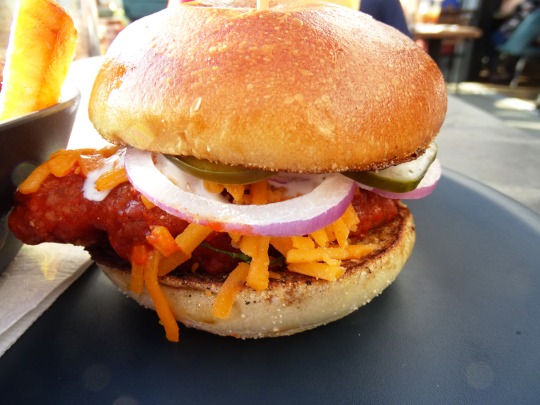
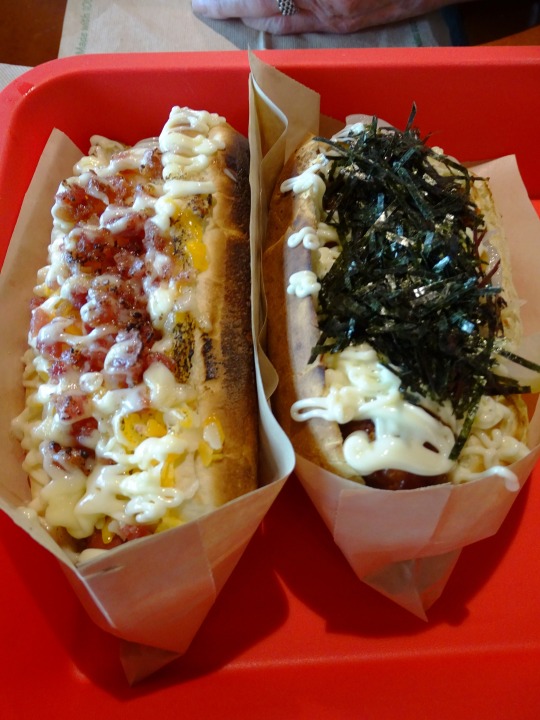

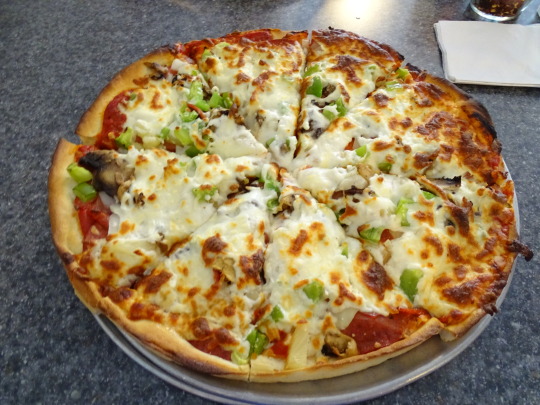
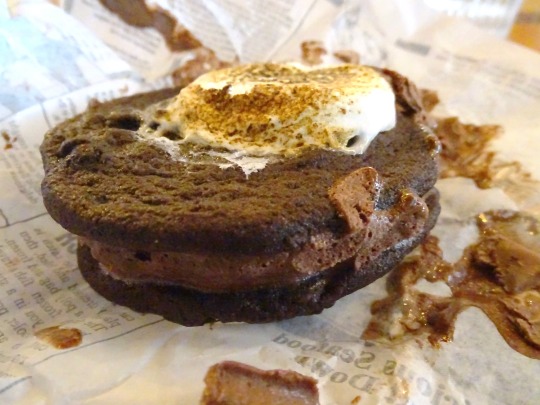

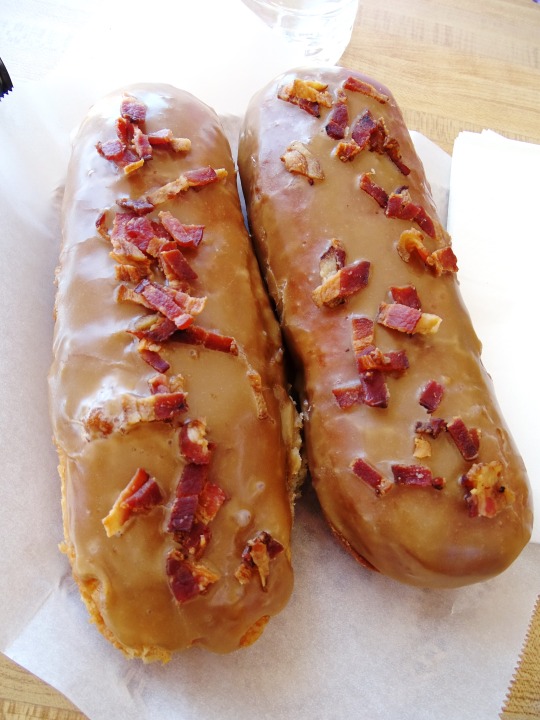
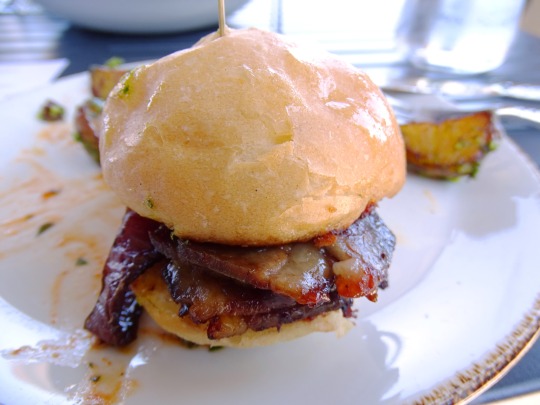
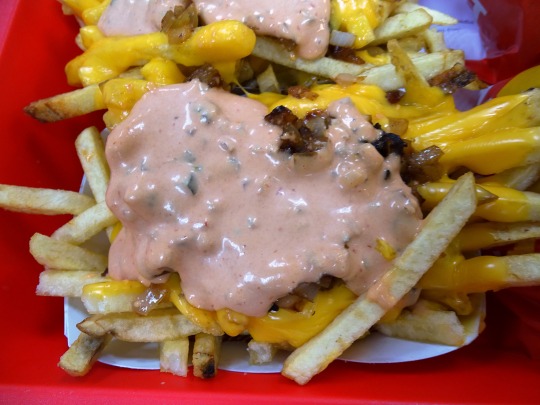
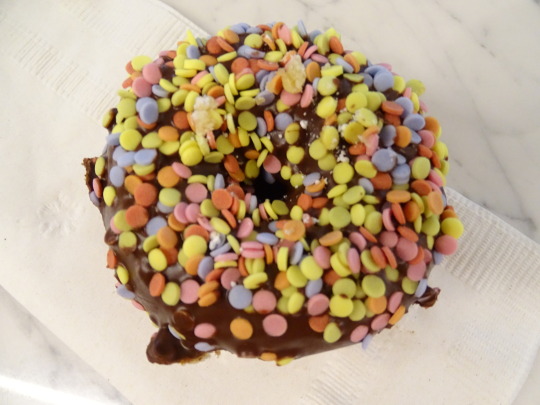
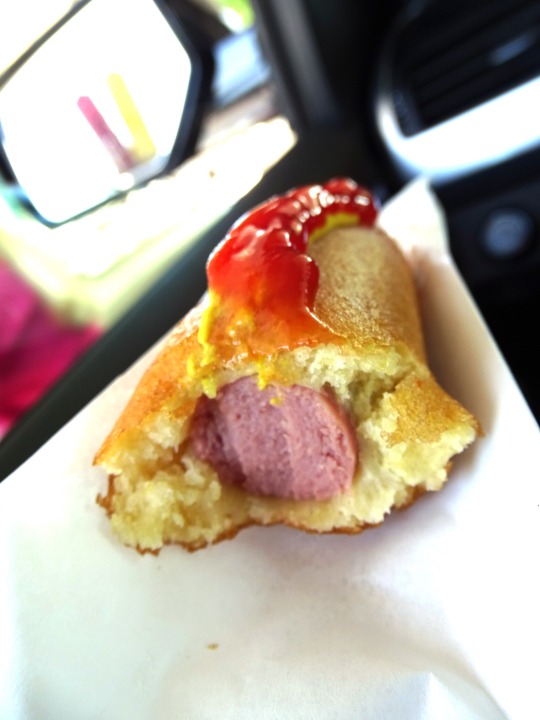

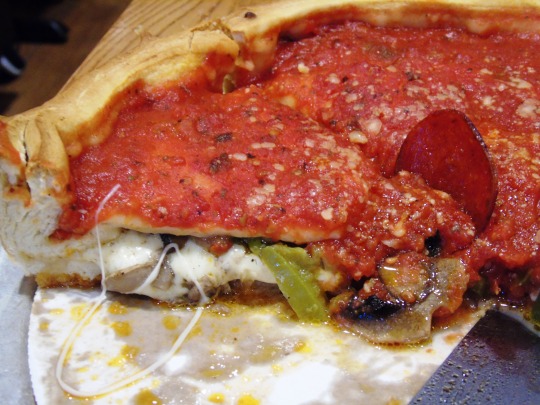
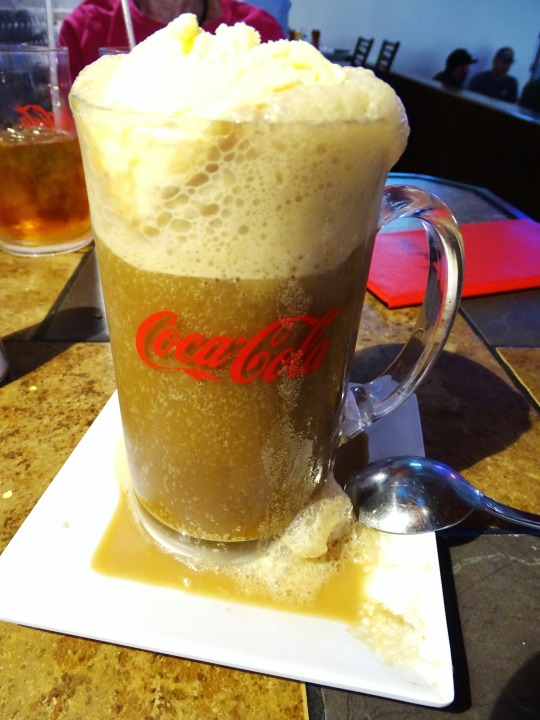
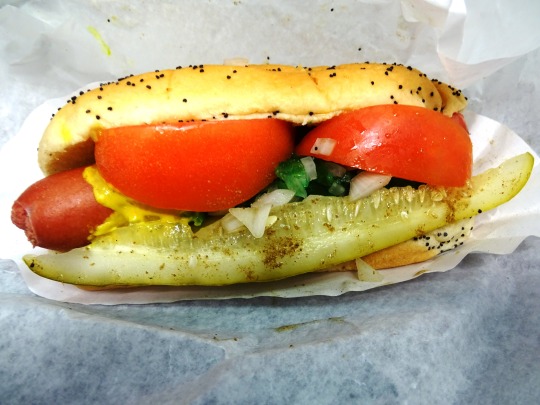
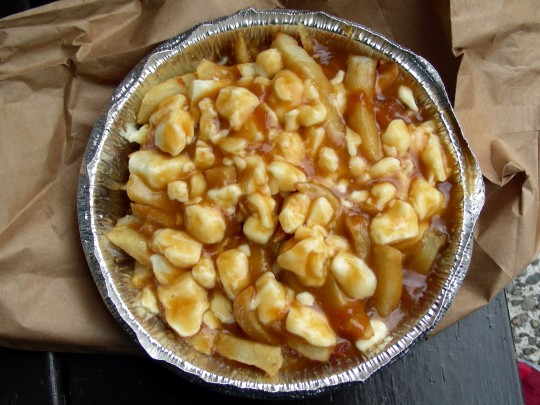
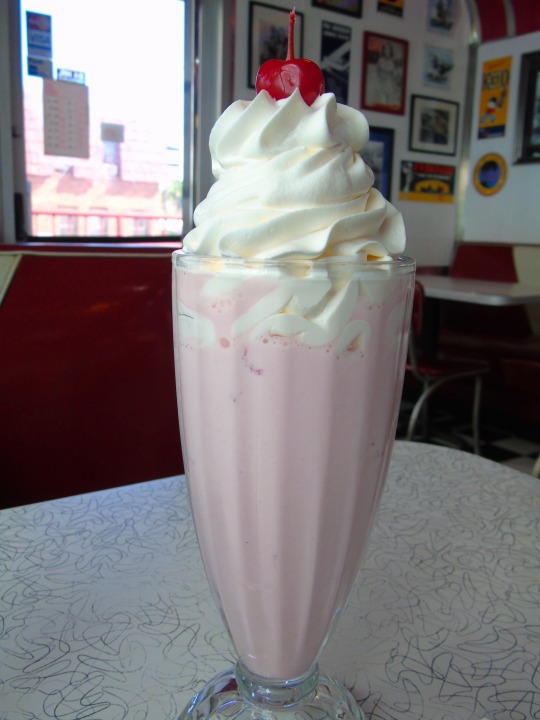
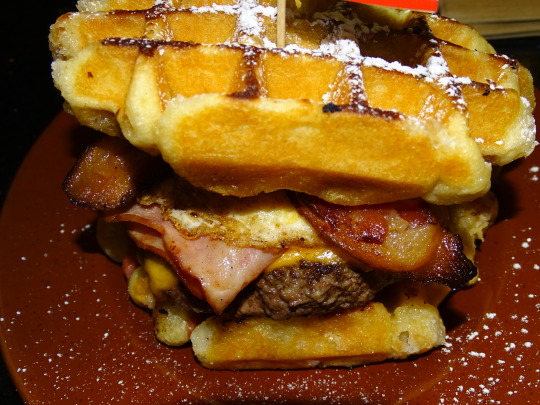
National Fast Food Day
National Fast Food Day celebrates fast food restaurants and the food that they sell. Fast food usually consists of prepackaged and ready-made food that can be quickly cooked—often by deep frying or microwaving—and eaten; most is designed to be eaten on the go, and does not require cutlery. Common fast foods include burgers, french fries, fried chicken, fish and chips, pizza, tacos, chicken nuggets, hot dogs, sandwiches, and ice cream. Fast food is typically high in sugar, salt, saturated fat, and calories, and is linked to many health problems. Fast food restaurants usually sell food at either a counter or a drive-through. Franchising, where there is uniformity in food and presentation between restaurants, is an important aspect of fast food. Besides franchise restaurants, gas station and convenience store food is sometimes seen as fast food, as is some food from street vendors.
The roots of fast food can be traced back to ancient Rome. Thermopoliums were small shops that sold food—such as hot sausages and bread—on-the-go. Urban apartment dwellers of the middle and lower classes often ate these foods. During the Middle Ages, vendors sold food to people in larger cities such as London and Paris. After 1860, fish and chip shops became prevalent in the United Kingdom, and became popular with the working classes. By the 1920's there were more than 35,000 of these shops.
The term "fast food" may first have been used in America by George G. Foster, who in his book, New York Slices, published in 1848, referred to the fast paced food in New York City's business district. An automat, a cafeteria with vending machines with pre-made food, was opened by Horn & Hardart, in 1902, in Philadelphia. A decade later they opened one in New York City, which created a sensation, and many more were built across the country, leading to the popularity of automats during the 1920's and 1930's.
Technological, social, and economic changes in America led to a boom in fast food restaurants by the second half of the 20th century. Following World War I, automobiles became popular and affordable, and curb service restaurants were created in the 1920's. During the post-World War II economic boom, people spent more and bought more, creating a culture of consumerism that led to both men and women working outside the home. Eating outside the home—which was once a luxury—thus became commonplace, because of expendable cash, and in some instances because it was a necessity. By 1951 Merriam-Webster had added "fast food" to their dictionary.
Franchising, which brought uniformity in the practices of particular restaurants, also fueled the boom of fast food. A&W opened in 1921, and became a franchise in 1923. Many see it as the first fast food restaurant. White Castle also opened in 1921, in Wichita, Kansas, and sold hamburgers for five cents each. They standardized the food production of fast food hamburger restaurants, which other restaurants, such as McDonald's, built on. McDonald's was created by two brothers, Richard and Maurice McDonald, in 1940, in San Bernardino, California. Originally it was a drive-in that focused on barbecue, but once the brothers saw the popularity of their hamburgers, they closed for three months, and reopened in 1948 with a new focus. Besides hamburgers, their menu included french fries, shakes, coffee, and Coca-Cola, and they served their food in a paper wrapping. At fifteen cents, their hamburgers were about half the price of ones available at diners. Ray Kroc made a franchise agreement and opened McDonald's restaurants in Illinois, and in 1961 he bought out the brothers. In 1953, another important hamburger based fast food restaurant was started in Florida, and would eventually be known as Burger King. Not all early fast food focused on hamburgers though, as the Kentucky Fried Chicken franchise opened in 1952.
Today the United States has the largest fast food industry in the world. There are close to 200,000 fast food restaurants in the United States, where over 50 million customers are served every day. About 44% of Americans eat at a fast food restaurant each week, and 11% of the calorie intake of adults in the United States comes from fast food. American fast food restaurants are now in over 125 countries, and the intake of fast food worldwide continues to rise. But, fast food has not expanded without criticism. Besides facing criticism for the nutritiousness of its food, the industry has also been pilloried for paying its workers low wages, usually without benefits. Over half of fast food workers are on some sort of public assistance, which has cost taxpayers 7 million dollars annually.
How to Observe National Fast Food Day
Celebrate the day by eating fast food, as you finally have a good excuse to do it! Order fast food at a counter and eat it inside, or go through a drive-through and eat your food somewhere else. There are many restaurants you could choose from. If you are not one to eat fast food, you could watch Super Size Me, or read Fast Food Nation, or watch the eponymously titled film that was based off the book.
Source
#Beef Bacon Cheese Dog#Legendary Stacker Burger#Factory Pizza#travel#original photography#vacation#USA#Canada#National Fast Food Day#NationalFastFoodDay#16 November#restaurant#Breakfast Waffle Burger#Chicken Lickin' Good#S'More Ice Cream Sandwich#Breakfast Club Burger#Maple Bacon Log#Animal Style Fries#Brisket Sliders#Chicago Classic Stuffed Pizza#Root Beer Float#Corn Dog#Chicago Hot Dog#Poutine
0 notes
Text

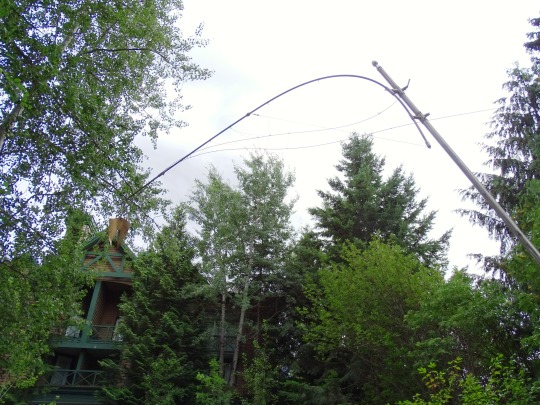
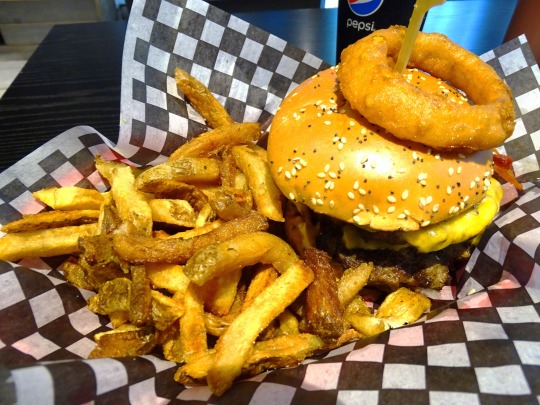



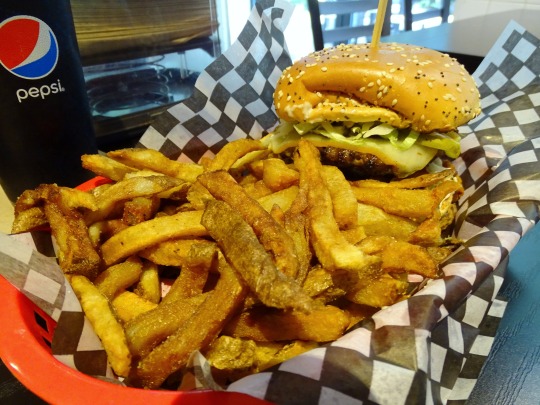



Whistler, BC (No. 4)
Completion of the Pacific Great Eastern Railway in 1914 greatly reduced the travel time from three days, providing ease of access from Vancouver, and the Rainbow Lodge gained a reputation as the most popular vacation destination west of the Rockies. The lodge was primarily a summer destination, with boating, fishing and hiking among the most popular activities, and soon other lodges began to open not just on Alta Lake, but on other valley lakes as well.
Appreciation of the outdoors was not the only activity in the valley, however. Logging was a booming industry. During the first half of the 20th century, most of the lower slopes of the surrounding mountains were cleared of old-growth. At its peak, four mills were in operation, most located around Green Lake. Prospecting and trapping were pursued as well, though no claims of great value were ever staked.
Source: Wikipedia
#Smokehouse Burger#Legendary Stacker Burger#Wayfinder by Dwight Atkinson#Village Park#travel#original photography#vacation#tourist attraction#landmark#landscape#clouds#nature#cityscape#flora#Canada#summer 2023#British Columbia#blue sky#countryside#snow#forest#tree#Whistler#woods#fir#pine#Coast Mountains#Pacific Ranges#small town#architecture
0 notes